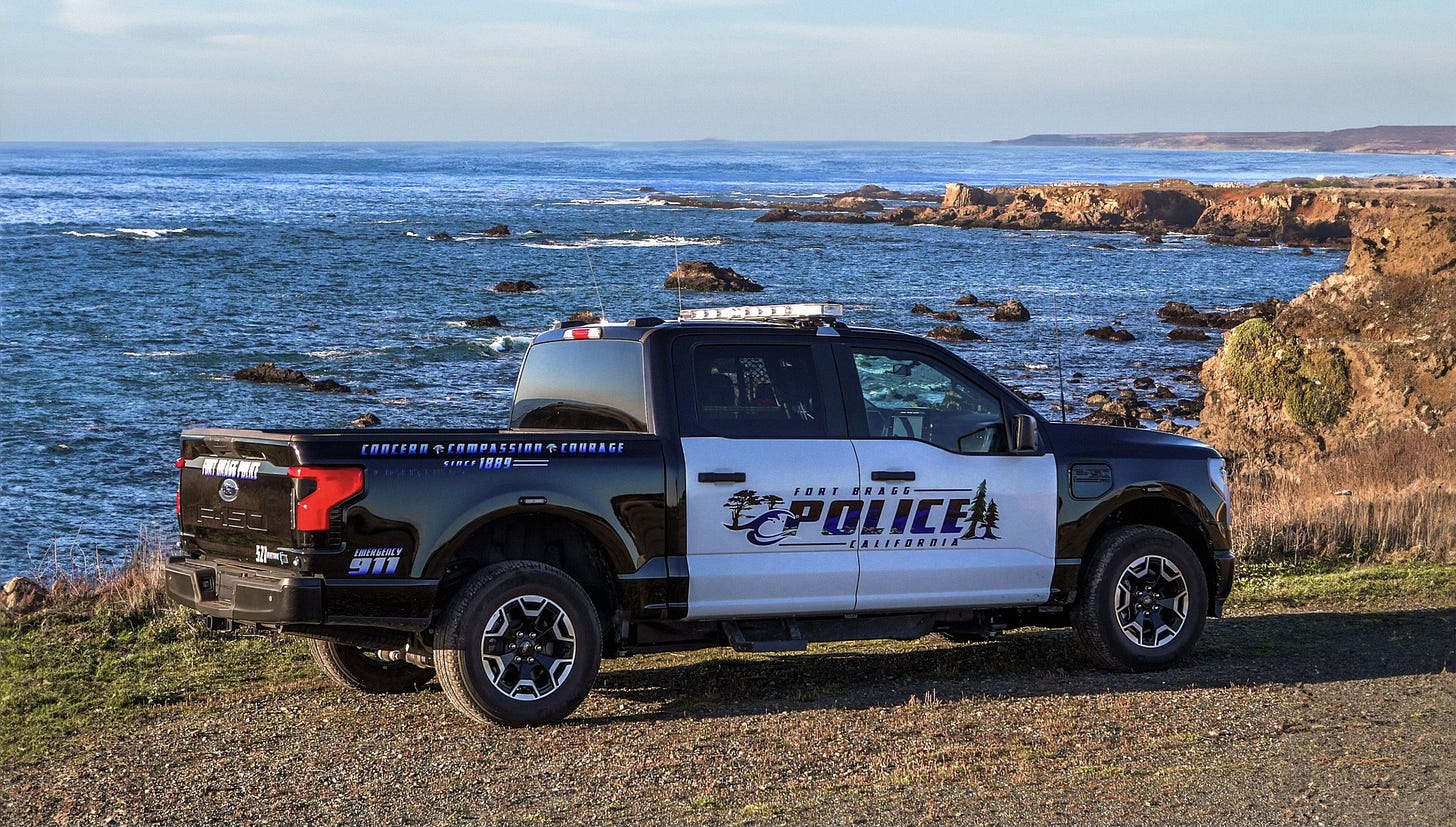The Challenges of Electric Police Vehicles: Why BEVs Aren't Ready for Law Enforcement (yet)
Exploring the growing pains of electric vehicle integration in law enforcement, from infrastructure issues to leadership pitfalls.
When Car and Driver magazine initially reviewed the first mass produced Tesla in 2013, the Model S, they offered the following praise: “Most important, it’s not just a good electric vehicle, it’s a good car.” While I’m immune from the urge to purchase one, I recognize their value in the market. I filled my truck at a slow pump that took an extra three minutes and recognized that I didn’t have the disposition for being at a broken charging station with a flat battery in the middle of nowhere. I’m all for people enjoying battery-electric vehicles (BEV) from the humble Nissan Leaf to the crab walking Hummer. The acceptance of BEVs into the mainstream is an exciting factor that has sparked a new age of innovation.
Police car of the future?
Even in the electric vehicle friendliest communities of California, BEV police cars are not gaining acceptance, despite being mandated by state law. Menlo Park, California, minutes from Tesla HQ in Silicon Valley experimented with three Tesla Model Y, an SUV and larger style BEV. It cost an additional $25,000 to outfit them over Ford Explorer Hybrid Police Package and using a consumer grade level two charger, they required eleven hours to charge to 100%. Tesla vehicles are replete with advanced features that translate poorly to policing including a $102,000 (outfitted) price tag. The August 2024 report to the city commission includes commentary like:
“… the Tesla presented challenges due to the small interior space, “smart car” features, and low vehicle profile limiting maneuverability (e.g., jumping curbs, off-road use).”
The report documented numerous quirks, that are likely unique to Tesla where automatic safeguards were challenging to overcome, buried in screen sub menus during dynamic situations. It wasn’t suitable for more than one officer and one prisoner. Bucket seats and duty belts caused discomfort and damage. There was a promise of lower maintenance and repair but for every day that an Explorer was off the road, the Tesla was down for three days. Anaheim has also launched a pilot program with Tesla Model Y vehicles in Orange County California in April of 2024. They will encounter similar results. Pity South Pasadena who moved their whole fleet to Tesla.
Police truck of the future?
Fort Bragg, a California coastal community north of the Bay Area with eight marked units became an early adopter with Ford BEV pickup trucks. In an article written for Police1, Chief Neil Cervenka says:
“Fort Bragg was awarded a USDA grant for vehicles and utilized the budgeted funds to allow us to order four new Lightning trucks instead of two gasoline Explorers. In hindsight, selecting and ordering EVs was the easiest part. Charging infrastructure was the most difficult.”
Keep reading with a 7-day free trial
Subscribe to American Peace Officer to keep reading this post and get 7 days of free access to the full post archives.






